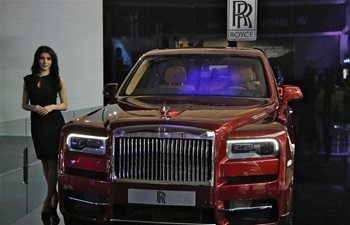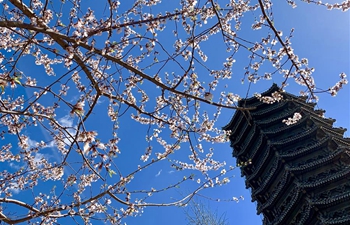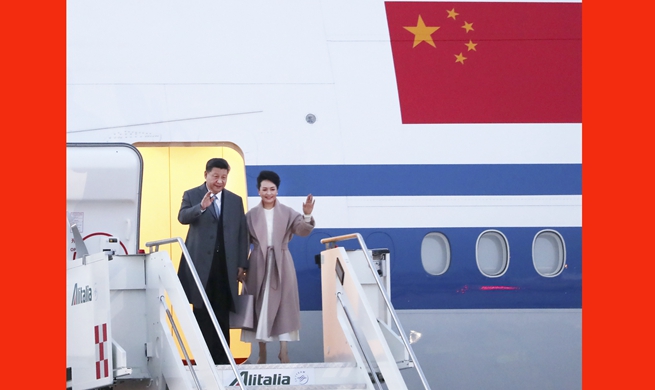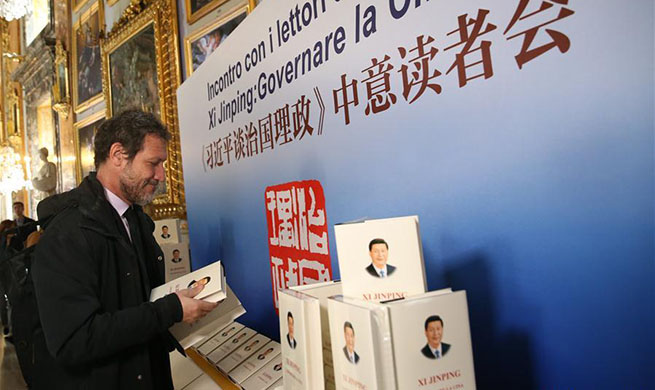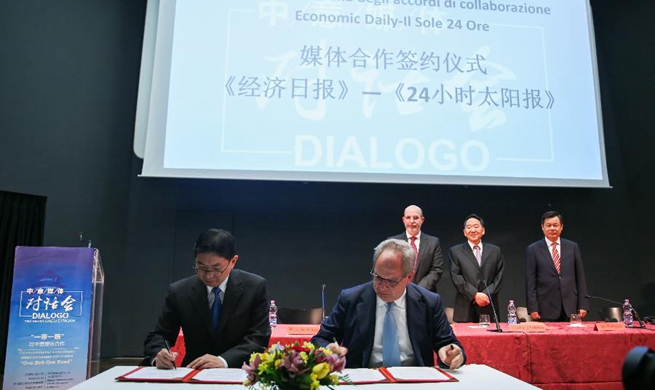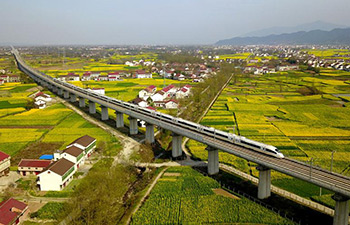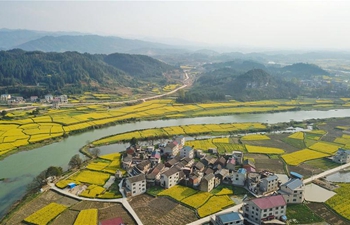by Duncan Murray
SYDNEY, March 22 (Xinhua) -- Joining Melbourne Design Week in 2019 were two leading thinkers in the realm of architecture and urbanism, Jing Liu and Beatrice Leanza, who led a discussion on China's rapid urbanization experience and the challenges and opportunities it presents.
From being front and center to some of the most exciting modern undertakings in urban architecture, both experts agree on the need to deal with population density, not just pragmatically, but creatively, and how a more condensed population can actually lead to a positive result for both people, and the planet.
Raised in Nanjing until she was 13, renowned architect Jing Liu witnessed first hand what it was like to live in a major Chinese city. Going on to study and work in other countries instilled her with a sense of globalism which she says is integral to her work.
The centrepiece of this year's design week, was an art installation by Liu's award-winning architecture firm, SO - IL, which she formed in 2008 with Dutch partner, Florian Idenburg.
SO - IL's groundbreaking projects range across the globe from France, South Korea, China and the United States, to a recently won commission in Melbourne itself. Liu told Xinhua that ideas are at the heart of her work as an architect, and what she seeks to convey to those who enter her spaces.
"We really want to use the built form, and also the process of making public space and developing new aesthetics, to think about the contemporary conditions of how people relate to each other and how we relate to our environment," Liu said.
"So it's more about using architecture as a language to discuss those things. I think that's the beauty of architecture, that you're able to communicate on a visceral and experiential level, it's not just with words."
Joining Liu, was Italian born designer and curator Beatrice Leanza, who has been working in China since 2002 and until recently was the curator of Beijing Design Week.
Leanza explained how projects such as Liu's, which are sometimes radical in their approach and deal with specific concepts or issues, can be scaled up or act as inspiration for future projects.
"The scale of design is almost not relevant when we want to speak of design being impactful," Leanza said.
"I'm very interested in what practitioners are doing, how they understand their role within the practice and the larger discourse of what can architecture of design do for our contemporary times."
Two of the main themes emerging in urban design projects around the world are - cohabitation, or shared spaces, and environmental sustainability - directives which many believe can complement each other and help to solve some of the greatest contemporary challenges.
"I think inherently with the lifestyle and the habits of consumption we have now, which is irreversible in a way, the only way for us to collectively be more sustainable is to have enough density," Liu said.
"If you have suburban low density development or even countryside that's connected with very low usage infrastructure, there is no way that we can collectively consume less if we're not talking about high density, high-capacity development."
However, as past experiences of urbanization have shown, functional high density cities don't create themselves. They require vast amounts of planning, infrastructure and well utilized public space.
Faced with the most rapid urbanization in history, China is now pursuing as a matter of policy, quality growth.
The top down approach is now one of transport infrastructures, regulating development, and maintaining sufficient services, meanwhile there is a push from the bottom for using more sustainable building materials and more efficient use of space.
"There is a pronounced effort for architecture not to be wasteful. There are many examples of projects trying to use sustainable materials, meaning using locally found resources and materials and workforce at the same time," Leanza said.
Many modern housing projects in China are now including smaller individual dwellings in favour of larger shared spaces such as kitchens and bathrooms - something which Liu believes can actually be a step forward rather than a step back.
"A lot of the younger generation, they don't smoke, they don't drink, they don't do any substance and they live as small as possible - I think for them that's actually more enlightened," she said.
"So I think if you don't consider it as going back but more as going forward, then anything can happen."
Another thing which China has succeeded at, and which many countries have attempted to emulate, is the 'tower in the park' typology.
"The tower in the park, is where you concentrate all the living space in more high density towers and you leave the ground as open as possible," Liu explained.
"In the West, a lot of people say that has contributed to ghettos and poor quality buildings, but that typology has actually always worked in Asia, both for Japan and for China in a lot of places."
Liu looks at human habit, and how architecture shapes, or is shaped by those habits. She considers the parks in China to have worked because the culture was already one of being outdoors.
"You have to remember that until 20 years ago most of Chinese people were farmers and we all lived outside. Even the courtyard house, the old traditional Chinese architecture is all about open space and empty space so our habit of living is much less about being inside and a lot about being outside."
"Even if you live on the 20th floor you come down and you go social dancing or you do tai chi, the open space is the courtyard in a way."
The younger generations will no doubt approach new urbanism with their own habits, and architects are having to respond to modern times - taking into account technology and the time spent on devices like computers and smartphones.
Time will tell how the younger generations adapt and what innovations they contribute to the process. Liu is heartened by what she sees as a willingness amongst the younger generation to accept new technologies and lifestyles.
"I think as the older generation we're always judgmental of what the young people are, we tend to think that we know better," she said.
"I'm actually more for not judging the young generation. History takes it course, and then they're gonna go in a way that we cannot judge, we don't come from their perspective, and they have to solve their own problems as we have to solve our own problems."





